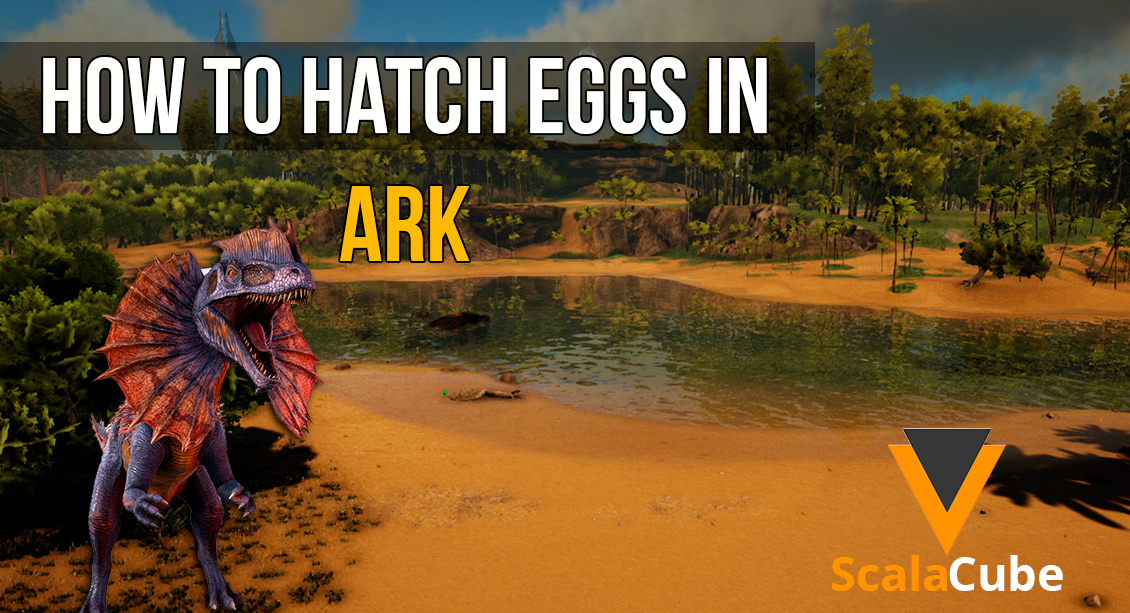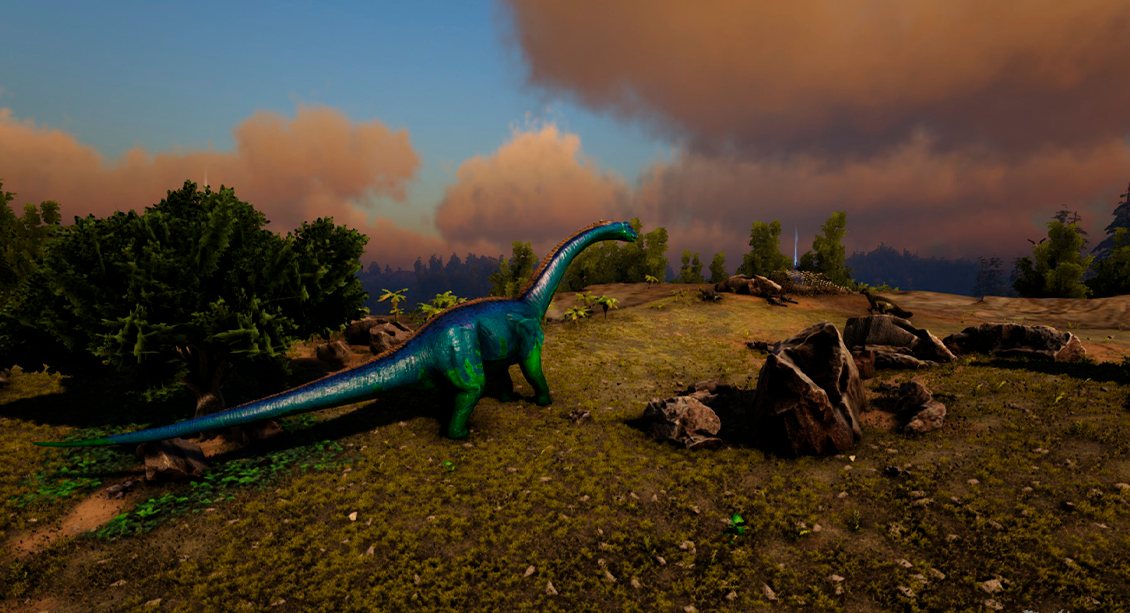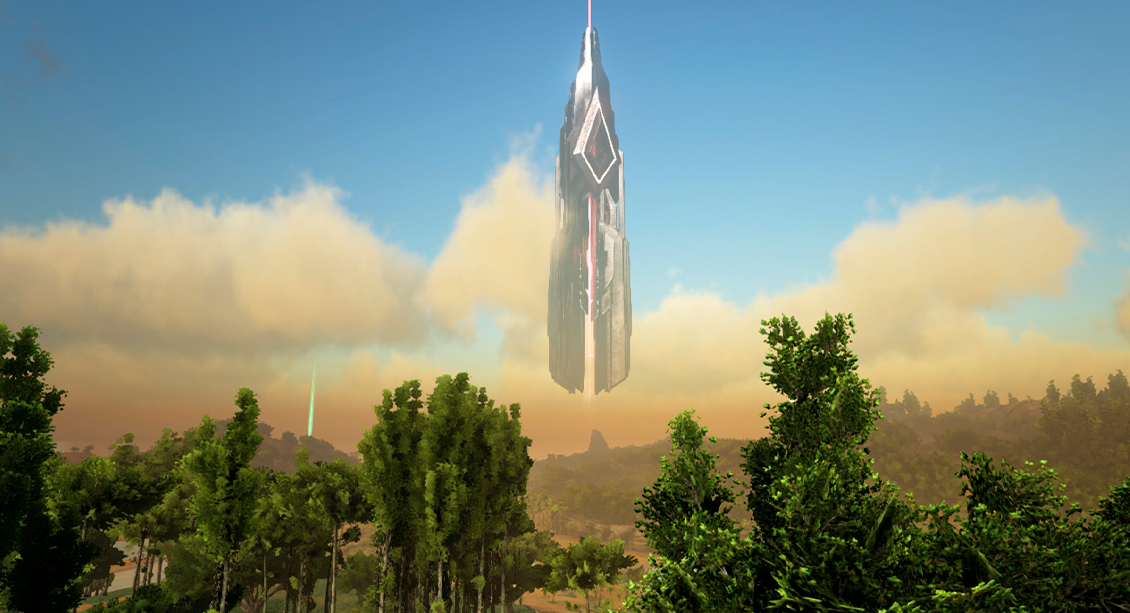How To Hatch Eggs in ARK

Make Your Own ARK: Survival Evolved Server
Your own ARK: Survival Evolved server is only 5 minutes away!
Start Your ARK: Survival Evolved Server Today!
How To Hatch Eggs in ARK
Besides taming wild creatures in ARK: Survival Evolved, you can also hatch new creatures from eggs. Importantly, this is a lengthy process that requires a lot of attention, making it one of the most difficult tasks. However, this guide is here to help you become an expert egg hunter. It touches on how to hatch eggs in ARK and the process involved in training a baby dinosaur. But first, don’t forget to install a Scalacube Dedicated ARK Server.How to Get an Egg in ARK
In ARK, players must first get an egg before they can hatch. The game has two types of eggs, which include fertilized eggs and unfertilized eggs. Only tame creatures in the game drop fertilized eggs, and to form them, you have to breed two creatures that are the opposite sex.
To succeed in the process, the creatures must be close to one another with Wandering and Mating enabled. Also, the creatures must not be mounted, following you, or have a packed
inventory. If all the mating conditions are met, then the female creature will drop a fertilized egg after a brief time.

Incubating the Egg
Once you've gotten your fertilized eggs, the next step is to incubate the eggs. In this system, the temperature is key to ensuring success. How you regulate the temperature depends on the species, as each of them has its preferred conditions for proper hatching.
When regulating the temperature, you need to pay attention since overly cold conditions will prevent them from hatching, and extreme heat will kill them before they hatch. To start the
process, check the tooltip of the egg to know the amount of heat needed to incubate eggs.
Then, place the egg close to a heat source and employ a thermometer to monitor its
temperature.
The most common sources of heat for incubation in ARK are campfires and standing lamps.
However, torches may also do the trick, and it is easier to set up. During the incubation process to increase the temperature, simply take the egg closer to the heat source and move it away to
reduce the temperature. The only time the egg stops incubating is if placed on the ground for too long.
An Alternate method is to use an incubator, so your fertilized eggs get the exact temperature for them to hatch. An egg incubator can be made with 500 metal ingots and can house up to 10
eggs. However, before this item can be crafted, players must've unlocked and mastered the Air Conditioner recipe in the game.
Using Air Conditioners
Once you've gotten your fertilized eggs, the next step is to incubate the eggs. In this system, the temperature is key to ensuring success. How you regulate the temperature depends on the species, as each of them has its preferred conditions for proper hatching. When regulating the temperature, you need to pay attention since overly cold conditions will prevent them from hatching, and extreme heat will kill them before they hatch. To start the process, check the tooltip of the egg to know the amount of heat needed to incubate eggs. Then, place the egg close to a heat source and employ a thermometer to monitor its temperature.
The most common sources of heat for incubation in ARK are campfires and standing lamps. However, torches may also do the trick, and it is easier to set up. During the incubation process to increase the temperature, simply take the egg closer to the heat source and move it away to reduce the temperature. The only time the egg stops incubating is if placed on the ground for too long.
An Alternate method is to use an incubator, so your fertilized eggs get the exact temperature for them to hatch. An egg incubator can be made with 500 metal ingots and can house up to 10 eggs. However, before this item can be crafted, players must've unlocked and mastered the Air Conditioner recipe in the game.
Caring for the Newborn
Once the hatching process is complete, you will have a new baby creature in your possession. Some measures should be taken to ensure its steady growth, including feeding it, keeping it warm, and guarding it against predators. In the case of feeding your dinosaur baby, it is
important to understand its dietary requirements.
This is because some dinosaurs may need berries and veggies, while others may require meat.
At first, it may be challenging to adapt to your baby dinosaur's dietary needs, but with time, it
becomes easier and fun.
The next key factor for your baby dinosaur’s healthy growth is monitoring their temperature. If it becomes too chilly, then you have to keep them warm by placing them close to campfires and
torches. This is crucial because your baby dinosaur may fall ill if it gets too cold. When this happens, you’re at risk of losing the newborn to death.
Also, since your dinosaur is still in its infancy, it is an easy prey to many predators in the game.
One of the best ways of promoting your baby dinosaur includes erecting fences and walls around it. This will prevent them from wandering too far and keep them safe from the eyes of
any beast in ARK Survival Evolved.

Imprinting
Once your baby dinosaur grows to a certain stage, it starts to develop some cognitive traits, and that is when imprinting starts. You can foster this process by spending more time with the baby dinosaur, feeding it, and playing with it. This is crucial, especially for players who want to grow a powerful and devoted dinosaur.

Use Scalacube for Your Adventures on ARK
Once your baby dinosaur becomes an adult, you can take it on different adventures and explore several dangerous terrains in the game. For an uninterrupted experience, we recommend Scalacube ARK servers for hosting friends in multiplayer gameplay. These servers have a 24/7 game uptime with smooth transitions and no lagging experience. Whether you are looking to hatch a fertilized egg or train a baby dinosaur, the Scalacube server has the solution to your troubles. FAQ
Can I Hatch Eggs in ARK Without Involving a Male or Female Dinosaur?
No, only female and male creatures of similar species can hatch fertilized eggs in ARK.
What Is the Ideal Temperature for Incubating Eggs in ARK?
The optimal temperature for incubating an egg is often specified in the tooltip of an egg, and it often differs depending on the species of the dinosaur
Can Players Craft and Use an Incubator Without First Learning an Air Conditioner Recipe?
No, while the Air Conditioner recipe is difficult to master, players must first master it before they can unlock the incubator.
Are Standing Torches and Campfires Good for Incubating Multiple Eggs at Once?
Yes, standing torches and campfires can be used to incubate eggs at once. The main issue is regulating the temperature to prevent overheating, which could kill the egg.
Is Imprinting Necessary for My Baby Dinosaur?
Imprinting is vital for your baby dinosaur because, through this process, they become more obedient, simpler to educate, and establish a strong link.
What Is the Perfect Ration for My Baby Dinosaur?
Once your baby dinosaur emerges, you will need to feed the creature frequently, sometimes even every minute, to ensure it grows healthy. It is essential to learn the dietary requirements of your baby since different species have their nutritional demands.
How Do I Safeguard My Newborn from Predators?
You can build walls and fences to safeguard your baby dinosaur from predators. Additionally, you can set traps or turrets while you're away to ensure it's not being attacked.
Can I Hatch Eggs Without a Thermometer?
Yes, you can hatch eggs without a thermometer, but the process can be challenging. First, place your hands on the eggs and adjust the heat source until it feels warm.
Can I Get a Fertilized Egg When I Breed Different Species?
No, before you can get fertilized eggs in ARK, you must breed the same species of creature.
What Is the Total Timeframe Required for Egg Hatching in ARK?
The species of the parents determines how long it will take for eggs to hatch in the game. Sometimes, it may take hours or even days, depending on the species.
Final Thoughts
Hatching eggs is an interesting game aspect in each of the ARK servers. Under this system, players can train and develop different species of original animals, which gives the game anextra layer of depth and complexity. Egg hatching is a joyful process, even if it can be tricky and time-consuming. There is no feeling that compares to that of successfully hatching and raising a
strong, devoted dinosaur.
Make Your Own ARK: Survival Evolved Server
Your own ARK: Survival Evolved server is only 5 minutes away!
Start Your ARK: Survival Evolved Server Today!
Copyright 2019-2025 © ScalaCube - All Rights Reserved.